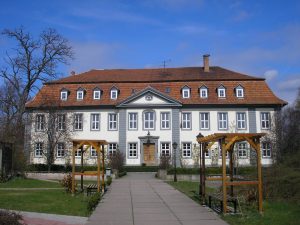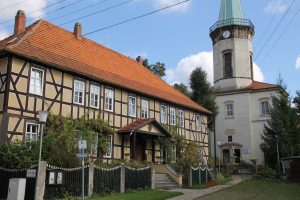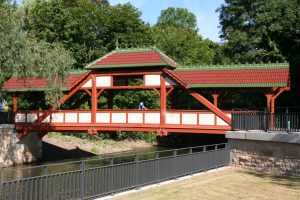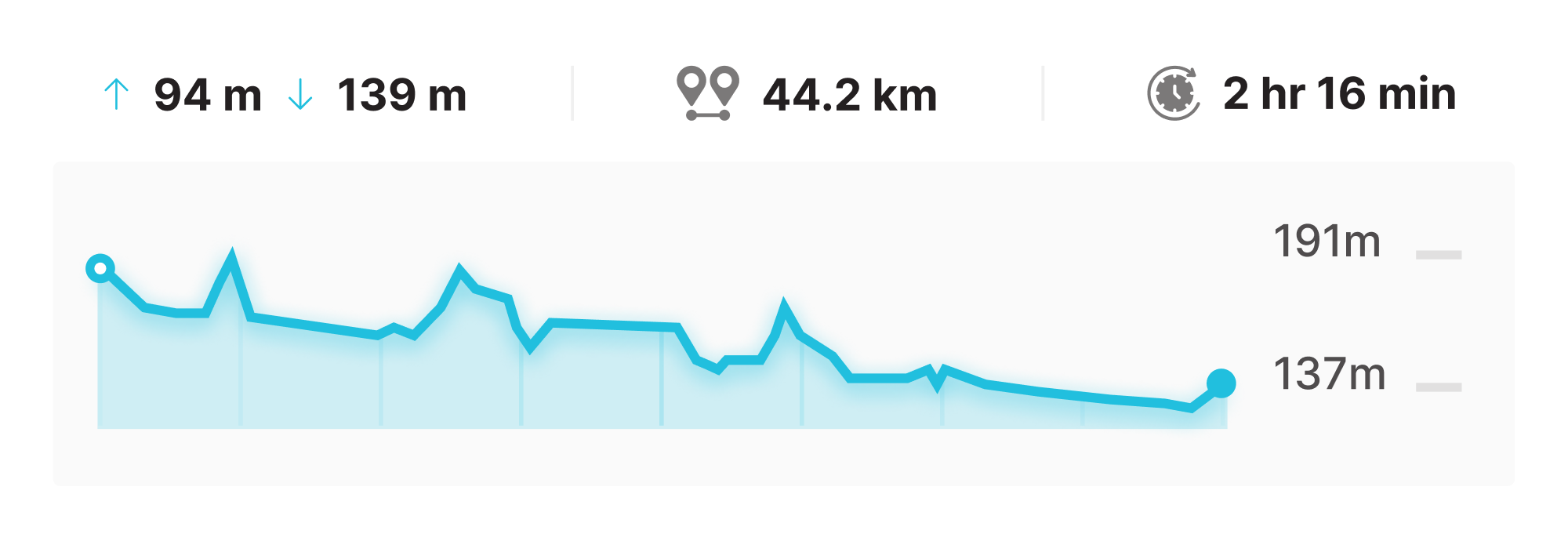On the outskirts of Herbsleben the route goes briefly uphill on an asphalt farm road and then through open farmland to Gebesee. At the highest point, with good visibility, a panorama opens up from the Ettersberg near Weimar to the skyscrapers of Erfurt. In Gebesee we cross the busy B4 and then turn left. After about 100 meters we turn right and after another 100 meters we see the beautiful main access road to Gebesee Castle on the left.
Worth seeing in the former agrarian town Gebesee is the eponymous castle in the baroque building from the 18th century. The original character of the castle complex has been largely preserved, but today a castle pension with the comfort of the 21st century invites you to stay. Regular guests in the summer months are the storks on the chimney of the former distillery. The town hall, built in 1540, St. Catherine's Church as well as St. Lawrence's Church, which was probably built as early as the 10th century but was first mentioned in a document in 1220, are also worth seeing.
We drive around the extensive castle complex with its farm buildings and then follow the Bornklingerbach and the Mahlgera in a wide curve to the right. After reaching the village thoroughfare, we turn left. Before the bridge we turn right onto the embankment to cycle together with the Gera cycle path for a short distance to Ringleben. Left over the Gera bridge we leave the Gera cycle path, turn left again, then after 100 meters turn right onto the country road to Haßleben, so that we soon cross the railroad tracks and reach Haßleben on the country road first uphill then downhill after about 3 kilometers.
Sights in Haßleben are the church St. Michael (baroque hall church) and the nature reserve (NSG) Haßleber, or not far from the Alperstedter Ried, located between Alperstedt and Gramme mill on the Laura cycle path.
In Haßleben we turn left at a right angle onto Vehraer Straße. Then we take the second street on the right and cross the Schmale Gera to cycle again at a right angle to the left in the direction of Werningshausen. The path leads northward sometimes more, sometimes less along the Schmale Gera. When we have passed the lime fen "Haßleber Ried", we reach the Gux mill in Werningshausen.
In addition to the Gux Mill, the Lady Chapel and the lovingly restored St. Wigberti Church with an idyllic church park are worth seeing in the small community of Werningshausen. Also recommended is a visit to the monastery "St. Wigberti", which is run by monks of the Protestant and Catholic denomination according to the rules of St. Benedict.
We leave the area of the monastery "St. Wigberti" on the right and at the end of the town we continue to the right along the "Gramme", a 30 kilometer long tributary of the Unstrut. Shortly before Wundersleben we pass the confluence of the Gramme and the Unstrut. We now follow the course of the Unstrut to the next Unstrut bridge. Over the bridge we reach Wundersleben.
Worth seeing in Wundersleben is the Boniface Church, which was first mentioned in 1449, and whose current building dates back to 1706.
However, the Unstrutradweg continues straight on and after about 2.5 kilometers meets the outskirts of Schallenburg, a district of Sömmerda. We cross the Unstrut in the direction of Tunzenhausen, turn right behind the Unstrut dam and ride on the asphalted dike rescue path on the left side of the Unstrut to the first houses of Sömmerda. In Sömmerda we cross the Riedtor bridge at the Unstrut weir and turn left onto the Dammweg in front of the grounds of the Kanu-Club Sömmerda e. V.. In the course of the regulation of the Unstrut and the construction of new weirs, an artificial white-water canal was built for slalom canoeists in 1977. Numerous national and international championships take place here. At the covered pedestrian bridge we cycle right through the city park to the old covered wooden bridge over the Mühlgraben. On the right we see the Dreysemühle and straight ahead after about 150 meters we are on the central market place of Sömmerda.
Worth seeing in Sömmerda are the well-preserved town wall, the town hall with its annex, the town church of St. Boniface on the market square, the church of St. Peter and St. Paul, today's rectory in half-timbered style, as well as the birth houses of Salzmann and Dreyse and the Dreyse mill, which has one of the largest mill wheels in Germany and which is used to generate electricity. Flour is still milled in it today. In the Dreyse House (www.dreysehaus.de) there is the historical-technical museum and a library.




| Name | Description | Link |

